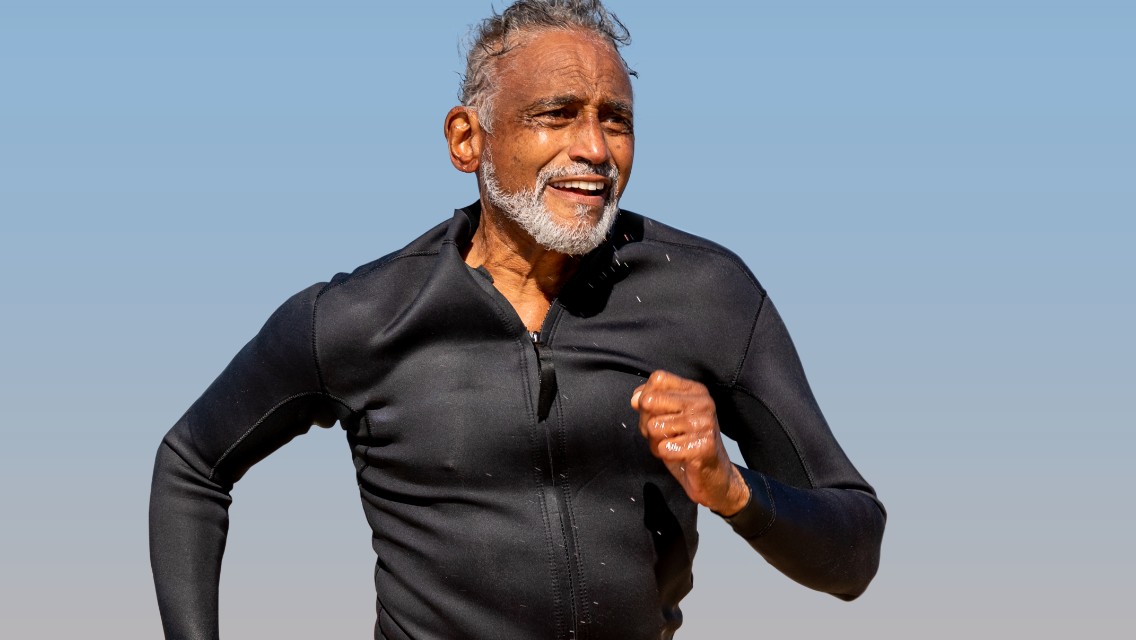We’re all aging, all the time, which means our bodies are always changing too. As the years pass, those changes can leave some of us dealing with health issues and injuries, as well as aches and pains, that require surgical intervention.
Back and joint pain, particularly in the knees and hips, are common problem areas for many older adults. And though many healthcare providers treat these issues with nonsurgical methods first, approximately 790,000 total knee replacements and more than 450,000 hip replacements are performed annually in the United States, according to the American College of Rheumatology. Additionally, nearly 900,000 Americans undergo spinal surgery each year, according to the National Institutes of Health.
No matter the type of surgery, the healing process can be daunting — both physically and mentally. From doing regular physical therapy to getting back to your normal daily activities and into an exercise routine, there are many steps in the recovery journey.
“For over a decade, I’ve coached people from all walks of life, including those coming back from a surgery or injury and those with preventive healthcare goals,” says Ryan Lew, CPT, CES, PES, ARORA-certified Dynamic Personal Trainer at Life Time in Schaumburg, Ill. “They often come in slightly apprehensive of the unknown, and it’s a journey to understand their new body and its movement patterns and capabilities.”
We asked Lew to offer some advice for those looking to return to regular movement after a surgery. The guidance he offers is general, as he acknowledges that each person’s situation is unique; consult your doctor if you’re recovering from surgery prior to making any changes to your routine.
1. Follow your physical therapist’s guidance.
Physical therapy is often necessary post-surgery. Your physical therapist can recommend or assign exercises or stretches that help you along in your recovery, while a personal trainer can offer additional support and exercises to complement your therapy.
“After a surgery, a person has likely been in physical therapy and knows their limitations but is looking for further help to establish or re-establish a physically active lifestyle,” Lew explains. “Often, if someone is working with a physical therapist, I’ll connect with their therapist to make sure I’m creating the best possible plan for my client. This assures they are supported from all angles of the recovery process.”
2. Start slow and set limits.
When you’re ready to start exercising again, it can be tempting to jump back into a previous workout routine. But Lew recommends starting slow, setting limits, and focusing on little wins.
“When you work with a fitness professional, they can help you redefine your goals and figure out what’s realistic,” he says. “There’s no cookie-cutter approach. When I’m working with someone, I like to look at the entire body and discuss where they’re at mentally and physically before we create a plan together that we feel confident about.”
3. Focus on progressive resistance training.
When you start slow and stay consistent with resistance training, you can continue to make progress on building a base for strength and endurance in your post-surgery body.
“For the first four to six weeks after your physical therapist or doctor clears you for exercise, we’re not focusing on load or weight,” says Lew. “We’re working on getting the small muscles to activate, and relieving tension in the muscles compensated by surgery or injury so your body can work functionally again. After that, as you start to get stronger, you can add more weight and work on further improving your strength and endurance.”
4. Try low-intensity, steady-state cardio.
For your cardiovascular health, Lew recommends adding some low-intensity cardio into your routine. Depending on your abilities, this may look like walking outside or on a treadmill, water walking or swimming, or stationary biking. Be sure to consult your healthcare provider and a fitness professional for specific recommendations.
“Water workouts are great for the post-surgery population,” Lew says. “For example, ARORA Aqua at Life Time is a low-impact pool workout that produces less strain on your joints than land-based exercises. It’s a non-weight-bearing cardio class designed to improve endurance as well as strength and balance with added resistance from the water.”
5. Lean on your community and support systems.
Recovering from a surgery is not always a smooth journey, so Lew recommends looking for like-minded individuals to help you along the way.
“At Life Time, we have the ARORA community of active, older adults, which is a built-in support system for any type of healthy-living goal you may be trying to accomplish,” he says. “Even though we might have different individual goals, or be working within different limitations, everyone has the same objective of being healthier and that can be powerful. In the ARORA studio classes, there’s no intimidation factor so you can feel comfortable and confident — and, in turn, be more consistent with your workouts.”





